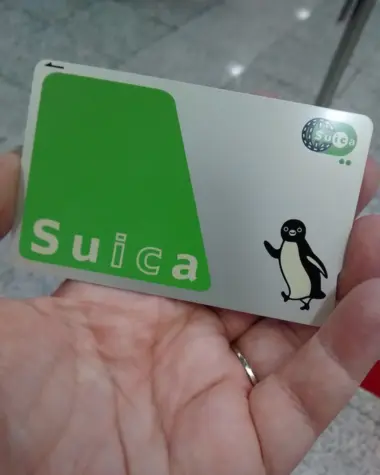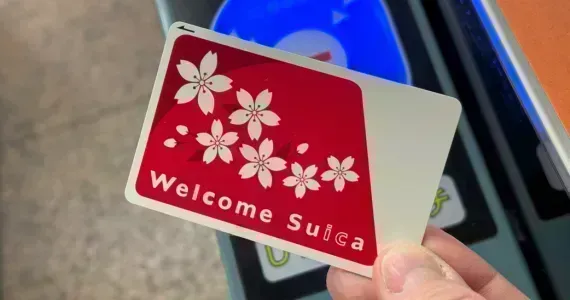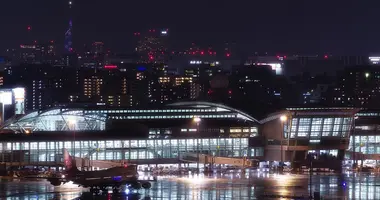Using the metro in Tokyo 東京メトロの使用方法
- Published on : 25/09/2022
- by : N.P. / J.R.
- Youtube
Easily take the metro in Tokyo
It is impossible to do without the subway to explore a city as large as Tokyo. If the network map may seem intimidating at first, it is nevertheless easy to navigate and use the metro and train lines of the Japanese capital. Here's a little user guide for the Tokyo metro ...
The Tokyo Metro network is controlled primarily by two private companies: Tokyo Metro and Toei Subway, which together operate 290 stations and nearly 9 million riders per day. This is not to be confused with the train system as it offers additional services covering the city. Many additional lines are managed by private railway companies: JR East, Tobu, Keisei, Keio, or even Tokyu. It is surely a maze of transportation systems!
The Tokyo metro system is, unsurprisingly, the busiest in the world every day. Without hesitation, it remains the preferred way to discover the city and take advantage of all its secrets.
How to get around by metro in Tokyo
First of all, it is important to learn about the geography of the city, to better understand the simplified metro map. All stations are written in both Japanese and English. Each station is also designated by a round circle in the color of the line, surrounding the initial of the name of the line used as well as the number of the station.
Example: C03 - Meiji-Jingumae, indicates that Meiji-Jingumae station is the "3rd station" of the "Chiyoda sen" subway line.
Practical information: Tokyo metro map, to consult and download.
Finally, if on a map, the distances seem reasonable, this is often misleading given the size of the city... This explains why the metro is so useful!
In Tokyo, it is often advisable to stay near the JR Yamanote line, which is one of the most convenient on the network. Circular, it covers and connects the key areas of the city, such as Shinjuku, Shibuya, Harajuku, Ueno, Ikebukuro etc. It is also very reasonable and can be used free of charge by holders of an activated JR Pass.
Discover all our practical advice for the JR Pass and the train in Japan
Tokyo subway fares and ticket purchase
Contrary to the French system with a single fare, the price of the subway in Tokyo varies according to the journey. The further you go, the more the price will increase! The minimum price of a trip is 140 yen (0,96€) (only on the Yamanote) and 170 yen (1€17) on the rest of the network.
It is recommended to plan your trip in advance, especially with Hyperdia or Google Maps. Both services are very reliable and allow you to find your way easily, timetables, directions and travel time is indicated.
To buy your ticket, you have to go to an automatic ticketing machine that can be found near the access gates to the platform. Available in English, just follow this procedure:
In Tokyo, the only way to buy a single subway ticket is to go to an automatic ticket machine that can be found near the platform access gates. Available in English, just follow this procedure:
1 . Locate the fare, mentioned under the name of the station to be reached, on the metro map above the automatic terminals (or choose the name of the destination station on the screen).
2 . Choose on the touch panel the number of passengers (by default: one)
3 . Press the button corresponding to the rate marked on the plan (always the unit rate)
4 . Insert the money in the slot provided for this purpose
5 . Collect your tickets and your change
Note that even if you change lines (and therefore companies), one and the same ticket is required, from start to finish. You may go through gates several times, handing the same ticket each time or inserting the ticket into the gate machine. At the end of the journey, the ticket will be forfeited when you exit the gate.
Suica and Pasmo prepaid cards
If you plan to stay in Tokyo for a while (more than a few days), we recommend you to get a rechargeable PASMO or SUICA prepaid card. Available on our website, these small chip cards will save you time and make your travel easier.
To use them, you just have to load money on them, via an automatic terminal (the same as for buying tickets). Place your card in the designated area on the terminal, then choose "Charge IC card", then select the amount you want to put on the card.
Good to know: you can only reload with cash!
Now you just have to pass your card over the gates to use the subway. The amount (in yen) spent for the trip, as well as the amount remaining on the card, is indicated each time at the gates.
If at the end of a trip, the gate turns red and refuses to open, don't panic! It means that there is not enough money left on your card. The Japanese have thought of everything and have set up a "Fare Adjustment" terminal to facilitate the operation.
In case of difficulty, you can simply go to an automatic terminal. In both cases, you will be able to add the complement on your card and leave the metro.
Read also: The Tokyo metro more accessible to tourists
Découvrez notre Welcome Suica
- Bon à savoir : le rechargement ne se fait qu'en liquide !
Il vous suffit maintenant de passer votre carte au-dessus des portillons pour utiliser le métro. Le montant (en yens) dépensé pour le trajet, ainsi que le montant restant sur la carte, est indiqué à chaque fois sur les portillons.
Si, à la fin d'un trajet, le portillon devient rouge et refuse de s'ouvrir, pas de panique ! Cela signifie qu'il ne reste plus assez d'argent sur votre carte. Les Japonais ont pensé à tout et ont mis en place une borne "Fare Adjustment" pour faciliter l'opération.
En cas de difficulté, vous pouvez tout simplement vous diriger vers une borne automatique. Dans les deux cas, vous pourrez ajouter le complément sur votre carte et sortir du métro.
Tokyo metro passes and cards
There are alternatives to the single ticket. the Tokyo Subway 24 Hour/48 Hour/72 Hour Ticket is a three-version card (1, 2, or 3 days) that allows you to travel unlimited on the entire Tokyo metro system, without private lines. The prices change according to the desired time:
- 24 Hour: 800 yen (€5.50)
- 48 Hour: 1200 yen (€824)
- 72 Hour: 1500 yen (€10,31)
Découvrez nos Pass Métro Tokyo
Rules to follow in the Tokyo metro
Very safe, always on time and very clean, the Tokyo subway works extremely well!
Wifi is often offered and toilets, always very clean, are available. As often in Japan, the knowledge of how to live together and the respect of others is very important!
There are some rules of good behavior to know and respect in the subway:
- You have to walk to the left in the corridors, stairs, and escalators.
- It is important to abide by the platform rules while waiting for the metro, respect the markings on the ground, and let the passengers exit the arriving train first.
- The train must remain a quiet and clean place: not to speak loudly, no phone calls, and no eating or drinking in the cars.
- Backpacks, if they are too large, should be placed on the racks high above the seating positions.
- Be careful to respect the reserved seats (disabled, seniors, pregnant women, etc.) indicated at the end of the cars.



















